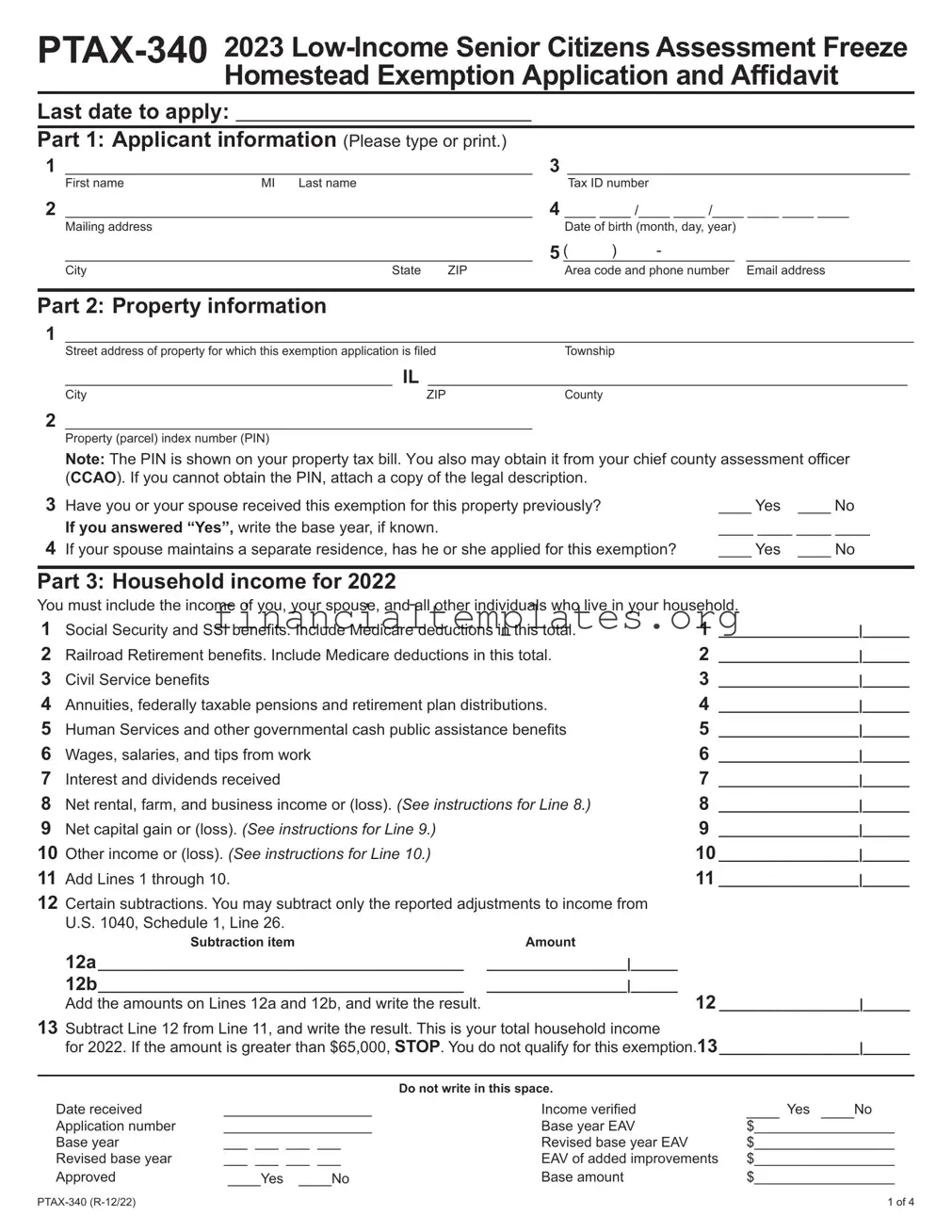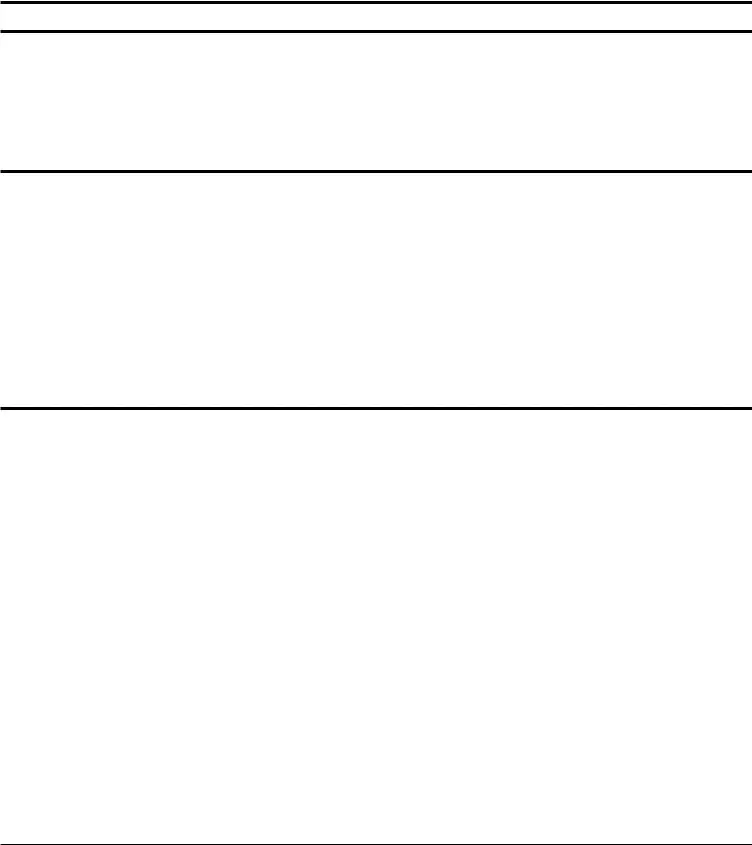What is the Low-Income Senior Citizens Assessment Freeze Homestead Exemption (SCAFHE)?
The Low-Income Senior Citizens Assessment Freeze Homestead
Exemption (35 ILCS 200/15-172) allows you, as a qualified senior
citizen, to have your home’s equalized assessed value (EAV) “frozen” at a base year value and prevent or limit any increase due to inflation. The base year generally is the year before the year you first qualify and apply for the exemption. For example, if you first qualify and
apply in 2023, your property’s EAV will be “frozen” at the 2022 EAV.
The amount of the exemption is the difference between your base
year EAV and your current year EAV. For Cook County only, the
amount of the exemption is the difference between your base year
EAV and your current year EAV or $2,000, whichever is greater.
Freezing your property’s EAV does not mean that your property taxes will not increase, however. Other factors also affect your tax bill. For
example, your tax bill could increase if the tax rate, which is based on the amount of revenues taxing districts request, increases. Your EAV and tax bill may also increase if you add improvements to your home.
However, if your home’s EAV decreases in the future, you will benefit
from any reduction.
Who is eligible?
The low-income senior citizens assessment freeze homestead exemption qualifications for the 2023 tax year (for the property taxes
you will pay in 2024), are listed below.
•You will be 65 or older during 2023.
•Your total household income in 2022 was $65,000 or less.
•On January 1, 2022, and January 1, 2023, you
–used the property as your principal place of residence,
–owned the property, or had a legal or equitable interest in the property as evidenced by a written instrument, or had a leasehold interest in the property used as a single-family residence, and
–were liable for the payment of property taxes.
You do not qualify for this exemption if your property is assessed under the mobile home privilege tax.
Surviving spouse – Even if you are not 65 or older during 2023, you are eligible for this exemption for 2023 (and possibly 2022) if your spouse died in 2023 and would have met all of the qualifications.
Residents in a health facility – Even if you did not use the property as your principal place of residence on January 1, 2023, you qualify for this exemption if you are a resident of a facility licensed under the Assisted Living and Shared Housing Act, Nursing Home Care Act, ID/DD (intellectually disabled/developmentally disabled) Community Care Act, or Specialized Mental Health Rehabilitation Act of 2013 and you meet all other requirements, have received this exemption previously, and your property is either unoccupied or is occupied by your spouse.
Residents of cooperatives – If you are a resident of a cooperative apartment building or cooperative life-care facility, you qualify for this exemption if you are liable for the payment of the property taxes on your residence and meet the other eligibility requirements.
What is a household?
A household includes you, your spouse, and all other persons who used your residence as a principal dwelling place on January 1, 2023.
What is included in household income?
Household income includes your income, your spouse’s income, and the income of all individuals living in the household. Examples of
income that must be included in your household income are listed below. (For specific questions, see Part 3 on Page 4.)
•alimony or maintenance received
•annuities and other pensions
•Black Lung benefits
•business income
•capital gains
•cash assistance from the Illinois Department of Human Services and other governmental cash public assistance
•cash winnings from such sources as raffles and lotteries
•Civil Service benefits
•damages awarded in a lawsuit for nonphysical injury or sickness (for example, age discrimination or injury to reputation)
•dividends
•farm income
•Illinois Income Tax refund (only if you received Form 1099-G)
•interest
•interest received on life insurance policies
•long term care insurance (federally taxable portion only)
•lump sum Social Security payments
•miscellaneous income, such as from rummage sales, recycling aluminum, or baby sitting
•military retirement pay based on age or length of service
•monthly insurance benefits
•pension and IRA benefits (federally taxable portion only)
•Railroad Retirement benefits (including Medicare deductions)
•rental income
•Social Security income (including Medicare deductions)
•Supplemental Security Income (SSI) benefits
•all unemployment compensation
•wages, salaries, and tips from work
•Workers’ Compensation Act income
•Workers’ Occupational Diseases Act income
What is not included in household income?
Some examples of income that are not included in household income
are listed below. (For specific income questions, see Part 3 on
Page 4.)
•cash gifts
•child support payments
•COBRA subsidy payments
•damages awarded in a lawsuit for a physical personal injury or sickness
•Energy Assistance payments
•federal income tax refunds
•IRA’s “rolled over” into other retirement accounts, unless “rolled over” into a Roth IRA
•lump sums from inheritances
•lump sums from insurance policies
•money borrowed against a life insurance policy or from any financial institution
•reverse mortgage payments
•spousal impoverishment payments
•stipends from Foster Parent and Foster Grandparent programs
•Veterans’ benefits
What if I have a net operating loss or capital loss carryover from a previous year?
You cannot include any carryover of net operating loss or capital loss from a previous year. You can include only a net operating loss or capital loss that occurred in 2022.
Will my information remain confidential?
All information received from your application is confidential and may be used only for official purposes.
When must I file?
File Form PTAX-340 with the CCAO by the due date printed on the bottom of Page 2. You must file Form PTAX-340 every year and meet the qualifications for that year to continue to receive the
exemption.
Note: The CCAO may require additional documentation
(i.e., birth certificates, tax returns) to verify the information in this
application.
What if I need additional assistance?
If you have questions about this form, please contact your CCAO, also known as the supervisor of assessments, or county assessor, at the address and phone number printed at the bottom of Page 2.




